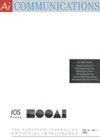基于混合深度ResNet-LSTM模型的癫痫发作自动预测
IF 1.4
4区 计算机科学
Q4 COMPUTER SCIENCE, ARTIFICIAL INTELLIGENCE
引用次数: 3
摘要
在过去的二十年中,已经开发了许多用于识别癫痫发作的先进数据处理和机器学习技术。然而,这些解决方案中的许多都需要大量的数据集和复杂的计算。我们的方法通过利用短时傅立叶变换(STFT)和频谱图(t-f)图像作为深度学习模型的输入阶段,将脑电图(EEG)数据转换为时频域。利用脑电图数据,我们构建了一个由深度卷积网络(ResNet50)和长短期记忆(LSTM)组成的混合模型,用于预测癫痫发作。利用谱图图像训练所提出的混合模型进行特征提取和分类。我们分析了CHB-MIT头皮EEG数据集。在5分钟、15分钟和30分钟的预测周期内,进行实验来评估所提出模型的性能。实验结果表明,该模型在5分钟的预测时间内具有最佳性能。平均准确率为94.5%,平均灵敏度为93.7%,f1评分为0.9376,平均假阳性率(FPR)为0.055。我们提出的技术超越了随机预测器和其他当前用于预测数据集中所有患者数据的癫痫发作的算法。人们可以利用我们提出的模型的有效性来帮助癫痫的早期诊断和提供早期治疗。本文章由计算机程序翻译,如有差异,请以英文原文为准。
Automatic prediction of epileptic seizure using hybrid deep ResNet-LSTM model
Numerous advanced data processing and machine learning techniques for identifying epileptic seizures have been developed in the last two decades. Nonetheless, many of these solutions need massive data sets and intricate computations. Our approach transforms electroencephalogram (EEG) data into the time-frequency domain by utilizing a short-time fourier transform (STFT) and the spectrogram (t-f) images as the input stage of the deep learning model. Using EEG data, we have constructed a hybrid model comprising of a Deep Convolution Network (ResNet50) and a Long Short-Term Memory (LSTM) for predicting epileptic seizures. Spectrogram images are used to train the proposed hybrid model for feature extraction and classification. We analyzed the CHB-MIT scalp EEG dataset. For each preictal period of 5, 15, and 30 minutes, experiments are conducted to evaluate the performance of the proposed model. The experimental results indicate that the proposed model produced the optimum performance with a 5-minute preictal duration. We achieved an average accuracy of 94.5%, the average sensitivity of 93.7%, the f1-score of 0.9376, and the average false positive rate (FPR) of 0.055. Our proposed technique surpassed the random predictor and other current algorithms used for seizure prediction for all patients’ data in the dataset. One can use the effectiveness of our proposed model to help in the early diagnosis of epilepsy and provide early treatment.
求助全文
通过发布文献求助,成功后即可免费获取论文全文。
去求助
来源期刊

AI Communications
工程技术-计算机:人工智能
CiteScore
2.30
自引率
12.50%
发文量
34
审稿时长
4.5 months
期刊介绍:
AI Communications is a journal on artificial intelligence (AI) which has a close relationship to EurAI (European Association for Artificial Intelligence, formerly ECCAI). It covers the whole AI community: Scientific institutions as well as commercial and industrial companies.
AI Communications aims to enhance contacts and information exchange between AI researchers and developers, and to provide supranational information to those concerned with AI and advanced information processing. AI Communications publishes refereed articles concerning scientific and technical AI procedures, provided they are of sufficient interest to a large readership of both scientific and practical background. In addition it contains high-level background material, both at the technical level as well as the level of opinions, policies and news.
 求助内容:
求助内容: 应助结果提醒方式:
应助结果提醒方式:


